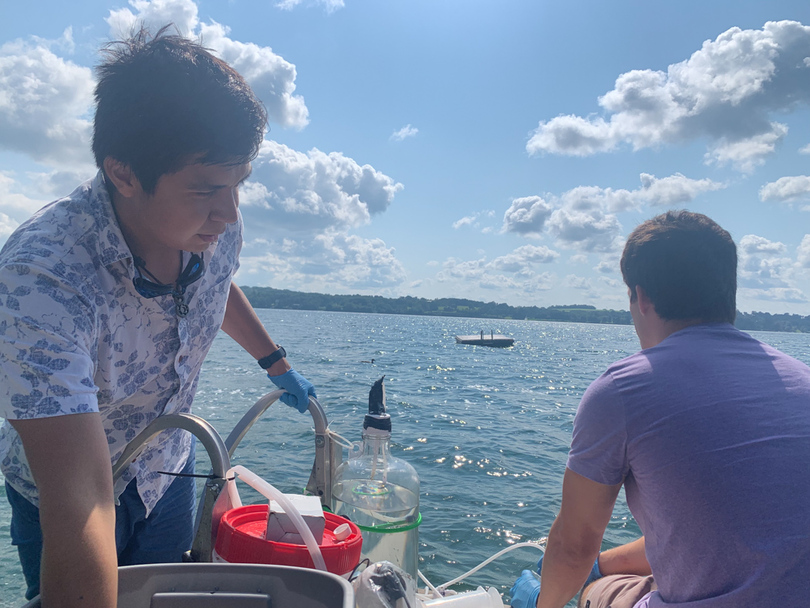Growing algae blooms in Skaneateles Lake pose threat to 140,000 residents

Julia Niehoff | Contributing Writer
The lake is usually considered one of the cleanest Finger Lakes, but recently indicated an emergence of the neurotoxin microcystis.
Get the latest Syracuse news delivered right to your inbox.
Subscribe to our newsletter here.
Skaneateles Lake is now showing signs of growing harmful algal blooms which release a powerful neurotoxin.
Large and small possible algae blooms have been seen on the lake, which is the city of Syracuse’s primary source of water, indicating a possible emergence of the neurotoxin microcystis. Although no known deaths have been reported in humans related to the exposure to microcystis, deathly liver damage in dogs and livestock can occur from ingestion.
The lake, which is considered one of the cleanest Finger Lakes, is relatively unfiltered besides the use of a coarse screening and disinfectant treatments containing a chlorine and fluoride additive. The lack of heavy treatment results in typically low algae blooms and an overall higher quality of water. Despite the purity of the lake, the neurotoxin microcystis may be emerging.
Chris Harvey, an undergraduate researcher at Syracuse University’s College of Engineering and Computer Science, pointed out the significance of the blooms.
“We get our drinking water from Skaneateles, and now with this harmful algal bloom, it can greatly threaten the 140,000 upstate residents that depend on it,” he said.
We get our drinking water from Skaneateles. Now with this harmful algal bloom, it can greatly threaten the 140,000 Upstate residents that depend on it.Chris Harvey, an undergraduate researcher at SU’s College of Engineering and Computer Sciences
Microcystis first became prominent in the late summer of 2017, said Charles Driscoll, an SU professor of environmental engineering.
The harmful blue-green algae has been eminent in the city of Syracuse every year since.
Additionally over the last 30 years, the impact of climate change on the lake has become more visible, he said.
Storm water runoff from surrounding land in the watershed accelerated the growth of the blooms, Driscoll said.
Researchers at the College of ECS are trying to uncover what factors have enabled the lake’s pollution. Driscoll and his team — composed of student researchers and local homeowners — have been utilizing remote sensing and drones down to the water composition at a molecular level.
Driscoll’s research on the water will be supplemental to additional research done by the Skaneateles Lake Association and the New York State Department of Environmental Conservation.
“The occurrence of harmful algal blooms are widespread across New York, including all of the Finger Lakes and in most areas of the US,” Driscoll said.
Paul Ray, a SUNY-ESF visiting instructor, said that there is a misunderstanding between farmers and non-farmers, creating tension on who is to blame for the recent pollution.
The third and fifth-generation farms in the watershed have been following the strict Watershed Agricultural Program to mitigate the use of fertilizer, reduce sediment nutrients, and detect pathogens, Ray said.
“The work the farmers have done is exemplary,” he said.
Residents of Skaneateles need to use sustainable lawn treatment and gardening practices to mitigate the pollution, Ray said.
Driscoll, as well as many environmental advocates, said in order to find the solution to an issue as vital as drinking water, people need to become more involved in local and federal politics. In this way, elected leaders may be encouraged to look at the issues seriously, he said.
Ray, however, said the issue goes beyond simply voting and should involve advocating for more conscious consumption from citizens. Citizens should be “full partners” in improving the environment, and a more direct relationship with farmers, like farm to table programs, is needed to bridge the gap between consumers and producers, he said.





